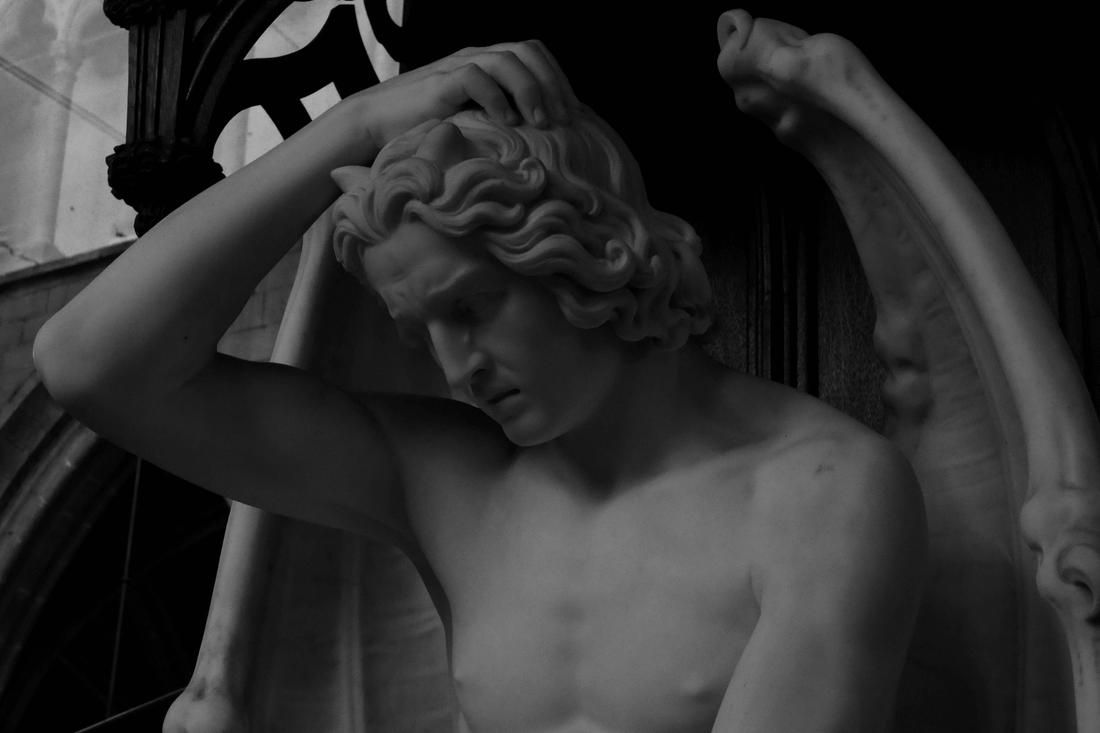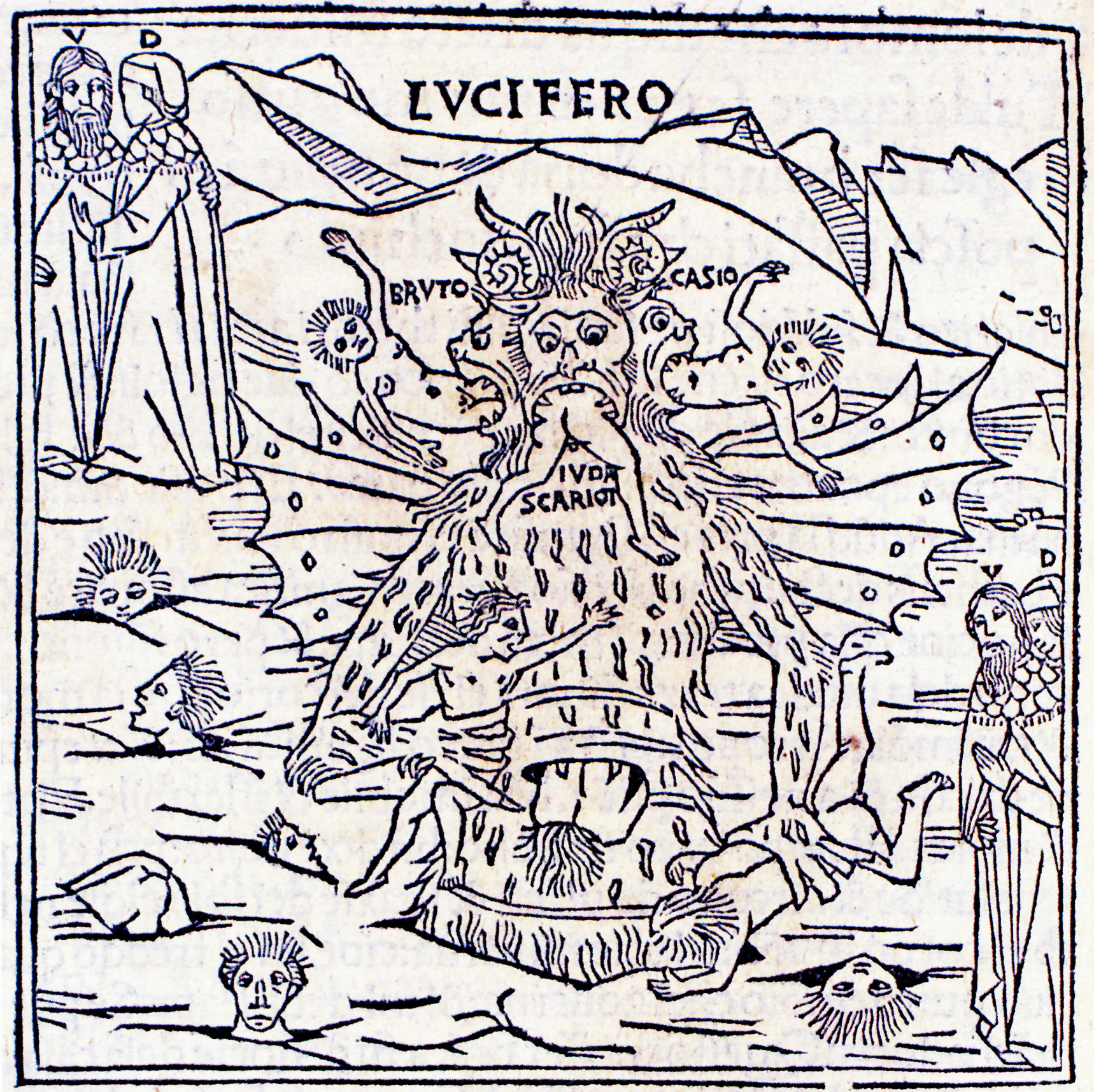
Are There Different Types or Branches of Satanism?
Share
When most people hear the term Satanism, they picture robed figures gathered in dark candle-lit rooms carrying out evil rituals! Others recall newspaper headlines from the 1980s and 90s filled with sensational stories of so-called "Satanic cults" committing crimes. These ideas come mostly from horror fiction, religious propaganda, and the mass hysteria known as the "Satanic Panic."
In reality, Satanism is a collection of diverse belief systems. Some forms do not involve any supernatural beliefs at all. Many Satanists do not believe in a literal Satan. Instead, they see Satan as a symbol of personal freedom, rebellion against oppressive authority, and the celebration of individual strength and critical thinking.
Other forms of Satanism are theistic. Followers may worship Satan, Lucifer, or similar figures as real spiritual beings. They may practice rituals and believe in metaphysical forces.
Modern Satanism contains a wide range of philosophies, spiritual practices, and political views. Some groups are focused entirely on personal growth. Others engage in activism. And a few small, isolated groups combine Satanic beliefs with fringe or extreme ideologies.
In this article we’ll try to explain the main types and branches of Satanism, correcting common misunderstandings and offering a clearer picture of what Satanists actually believe and do.

By Gustave Doré - https://digital.lib.buffalo.edu/items/show/1008, Public Domain, Link
Historical Background
The origins of Satanism cannot be understood without first looking at how the idea of Satan developed.
In the Hebrew Bible, ha-Satan was not a name but a title. It meant "the accuser" or "the adversary." This figure acted as a kind of prosecutor in God’s heavenly court. He tested humans but did not openly rebel against God.
As Christianity evolved, so did the image of Satan. By the time of the New Testament, Satan had become a more defined opponent of God and human salvation. Church leaders in later centuries expanded this portrayal. By the Middle Ages, Satan had become the ultimate symbol of evil. The Church taught that witches, heretics, and outsiders might worship Satan or make pacts with him. This idea became the basis for violent witch hunts and executions, especially in Europe and colonial America.
Despite these accusations, there is no reliable evidence that organised Satan-worshipping groups existed during the Middle Ages or Renaissance. Most of the accused were innocent or practised local folk religions.
In the 17th and 18th centuries, artists and writers began to rethink Satan’s image. John Milton’s Paradise Lost (1667) portrayed Satan as a tragic, rebellious figure. Some Romantic poets, such as Lord Byron and Percy Shelley, admired this version of Satan as a symbol of resistance against tyranny.
This new view of Satan as a cultural or philosophical figure set the stage for modern Satanism.
In 1966, Anton LaVey founded the Church of Satan. This was the first organisation to openly promote Satanism as a belief system. His book, The Satanic Bible, published in 1969, laid out the principles of LaVeyan Satanism: rational self-interest, individualism, and scepticism towards supernatural claims.
Since then, many other forms of Satanism have developed, each with their own ideas and goals.
Main Branches of Satanism
Satanism is not a single belief system. It includes different branches that vary widely in theology, philosophy, and practice.
Atheistic Satanism
LaVeyan Satanism
Anton LaVey’s Church of Satan promotes an atheistic worldview. Satan is not considered a real being but a powerful symbol of pride, freedom, and rebellion. Followers are encouraged to question religious authority, value rational thinking, and pursue their own happiness and success.
LaVeyan Satanists often perform rituals. These are not meant to summon supernatural forces but to provide psychological benefits. Rituals allow people to express emotions, set personal goals, and create a sense of ceremony in their lives.
The Satanic Temple (TST)
Founded in 2013, The Satanic Temple also rejects belief in supernatural beings. TST focuses on political activism and social justice. It fights for the separation of church and state, freedom of speech, LGBTQ+ rights, and reproductive freedom.
Unlike the Church of Satan, which avoids public political activism, TST is highly visible. Its members have organised campaigns against religious displays on public property and challenged laws they see as violating personal freedoms.
TST’s "Seven Tenets" emphasise compassion, justice, personal freedom, and scientific reasoning.
Theistic Satanism
Theistic Satanists believe in Satan, Lucifer, or similar beings as actual spiritual entities. Some view Satan as a benevolent guide or liberator who helps them achieve personal growth. Others see him as a force of nature representing change, power, or knowledge.
Theistic Satanism is not centralised. There is no single leader or scripture. Beliefs and rituals vary widely. Some practitioners work alone. Others form small groups, sometimes called covenants or temples.
Because of this diversity, outsiders often confuse theistic Satanism with unrelated practices such as devil worship or criminal activity, though most theistic Satanists reject violence and criminal behaviour.

By Petrus de Plasiis - Self-scanned, Public Domain, Link
Luciferianism
Luciferianism focuses on Lucifer rather than Satan. In many traditions, Lucifer is seen as a bringer of light, knowledge, and enlightenment. For Luciferians, the story of Lucifer’s rebellion is not about evil but about the pursuit of wisdom and independence.
Some Luciferians are theistic and believe Lucifer is a real being. Others use Lucifer as a symbol for intellectual freedom and personal growth, similar to how LaVeyan Satanists use Satan.
Luciferian philosophy often encourages discipline, learning, creativity, and the questioning of authority.
Temple of Set
The Temple of Set was founded in 1975 by Michael Aquino after he left the Church of Satan. Instead of focusing on Satan, this group honours Set, an ancient Egyptian god associated with strength, chaos, and individualism.
The Temple of Set offers a complex system of self-initiation. Members are encouraged to explore philosophy, ritual, and personal development. The group’s teachings are often academic and influenced by historical and occult studies.
Though smaller than other branches, the Temple of Set has had a significant influence on modern Satanic thought.
Fringe and Controversial Groups
A few groups use Satanic labels but hold extreme or conspiracy-driven beliefs. An example is Joy of Satan Ministries, which mixes theistic Satanism with neo-Nazi ideology and fringe theories. Mainstream Satanic organisations reject these groups and their views.
Cultural and Regional Variations
Satanism is mostly a Western phenomenon, but it has spread worldwide thanks to the internet and global communication.
United States and Europe:
Atheistic forms of Satanism, especially LaVeyan Satanism and The Satanic Temple, are the most common. Both groups have official chapters and large online communities.
Latin America:
Some beliefs mix Satanic symbols with local religious traditions. This has led to public confusion between Satanism and practices like Santa Muerte devotion. However, they are separate, and most Satanic groups in Latin America follow similar philosophies to their Western counterparts.
Middle East, Africa, and Asia:
In many countries, religious freedom is limited. People interested in Satanic ideas often explore them privately through books or the internet. Some risk social rejection or legal trouble for expressing these beliefs.
Online Communities:
The internet has allowed Satanists worldwide to connect. Many groups operate forums, social media pages, and websites where members discuss philosophy, share rituals, and offer support.
Despite regional differences, most modern Satanists share common values: individualism, questioning authority, and personal freedom.
Myths & Falsehoods about Satanism
Satanists worship evil or commit crimes
False. The vast majority of Satanic groups promote lawful behaviour and personal responsibility. The "Satanic Panic" of the 1980s and 90s led to false accusations of ritual abuse and criminal cults, but no credible evidence supported these claims.
All Satanists are atheists
Not true. While atheistic Satanism is common, theistic Satanists and Luciferians believe in spiritual beings or forces.
Satanism is the same as witchcraft or paganism
Nope, not true! Though some individuals explore both, Satanism focuses on individualism, rebellion against authoritarian control, and personal empowerment. Paganism typically involves nature worship and polytheistic beliefs.
Satanists hate Christians or other religions
Most Satanists criticise the political power of organised religion but do not promote hatred or violence against religious individuals. Many Satanists support religious freedom for all faiths, including Christianity.
Satanism is far more varied and complex than popular culture suggests. It includes atheistic groups that use Satan as a symbol of independence and rational thought. It also includes theistic traditions where followers view Satan or Lucifer as real spiritual beings representing personal growth, freedom, or rebellion. Philosophies differ, but most Satanic branches focus on personal responsibility, self-improvement, and challenging oppressive systems.
While sensational stories and myths have shaped public fears, especially during the Satanic Panic of the late 20th century, these do not reflect the beliefs or practices of the vast majority of Satanists. Whether through ritual, activism, or philosophy, modern Satanic groups are usually concerned with improving the individual’s life and defending personal freedoms - not promoting harm.
Understanding the branches of Satanism means looking past stereotypes and listening to what actual Satanists say about themselves. Like many modern religious and philosophical movements, Satanism reflects broader human interests: the desire for meaning, freedom, and the power to shape one’s own life.
If you’d like to declare your love for the Beelzebub himself, why not stick our ‘Hail Satan Stickers’ over everything you own?!













